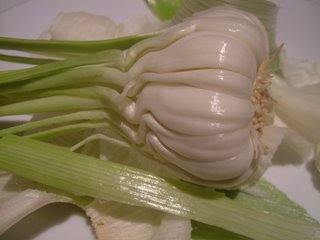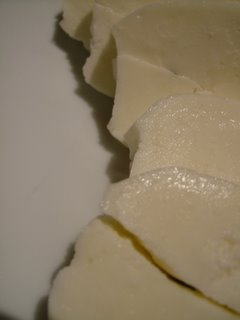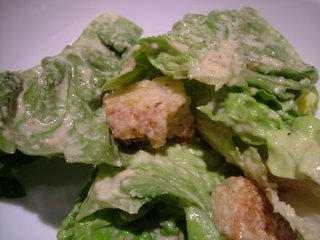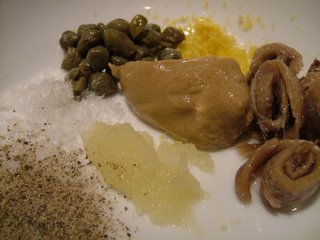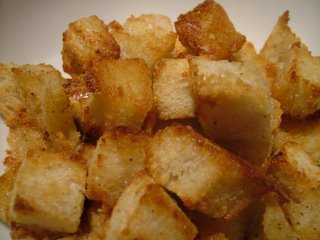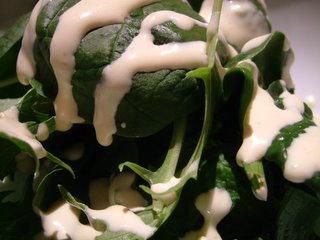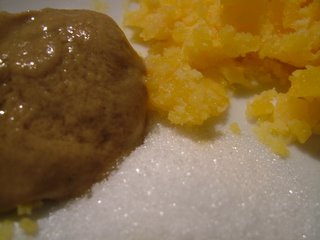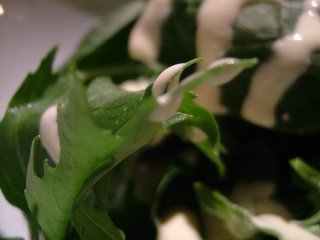When I lived in London, I worked a few doors away from Antonio Carluccio’s Covent Garden delicatessen and restaurant. Between that delicatessen and the MAC cosmetics shop, I usually managed to relieve myself of most of my salary by the end of the month with astonishing ease. It is depressing to realise that all you’ve got to show for having edited half a book is four tubes of pink-coloured whale fat, a pot of something sparkly, a small bag of pine nuts and a stomach full of aubergines that somebody else has cooked.
Happy day. I now live in a house which is essentially in the middle of a field, four miles from the nearest shop. I work from home these days, being a freelance, so I’m not tempted to don wellies and hike out to the shops in my lunch hour. This means that I make my own caponata and get to spend more on sparkly things at the weekends.
Caponata is a Sicilian vegetable dish, and it’s brilliantly flexible; you can use it as a side dish, a salad, a kind of saucy base for cooked meat; it is good hot, cold from the fridge or (my favourite) at room temperature. It’s typical of Sicily in its Arab-influenced agrodolce, or sour/sweet flavouring, and is spiked with savoury olives, capers and pine nuts.
This is very similar to the caponata from Carluccio’s (which they used to serve in a gorgeously oily foccacia sandwich with a slice of Fontina cheese). It’s another good recipe for those with a glut of tomatoes – I used a sugo (tomato puree) I’d cooked and bottled last year. Those without their own can buy good sugo at an Italian delicatessen (I recommend Balzano’s in Cambridge for locals) – Sainsbury’s also carry a good, own-brand Italian sugo for a short period every summer. To make your own, just simmer whole tomatoes in a pan with a little butter, salt and sugar (no water) until the skins are bursting, then strain the lot through a sieve.
To make a large bowl of Caponata, sufficient for a side-dish for six, you’ll need:
4 large aubergines (eggplants)
2 large onions
Inner leaves and stalks of a large celery plant
400g Sugo (see above)
1 small handful salted nonpareil capers, rinsed well
1 small handful chopped black olives (stoned)
1 large handful pine nuts
1 large handful basil, plus more to garnish
Nutmeg
1 tablespoon caster sugar
60ml sherry vinegar (use white wine vinegar if you can’t get sherry)
Salt, pepper
Olive oil
Chop the aubergines into even dice. Heat a few tablespoons of olive oil in a large, thick-bottomed pan until it starts to give off its fragrance and tip the aubergines in. Fry, keeping everything on the move, until the aubergines are soft and turning brown. Remove them to a bowl.
Dice the onions roughly and fry them in some more oil in the same pan until soft. Add the chopped celery heart and stalks, the pine nuts, capers, olives and sugo, and stir until the celery is tender – about five minutes. (Make sure you don’t add too much sugo; this should be moist, not wet.) Add the cooked aubergines and shredded basil to the pan and cook, stirring gently, for another ten minutes. Add the vinegar and sugar, cook for another five minutes to take the edge off the vinegar, and season with nutmeg, salt and pepper.
Serve immediately or leave to cool. Mine is currently on the kitchen table, cooling for Fontina sandwiches later this evening. My stomach is growling.


